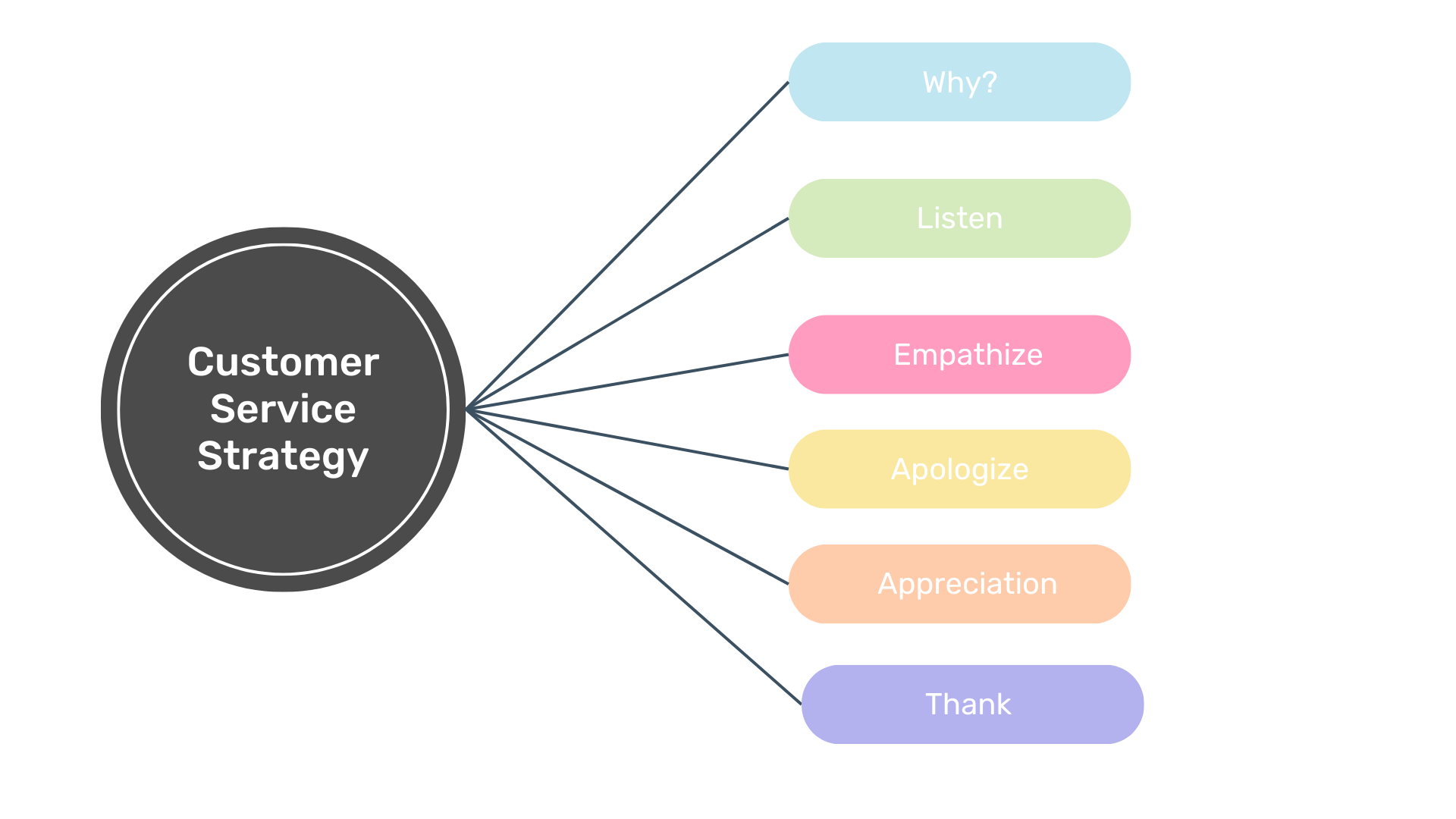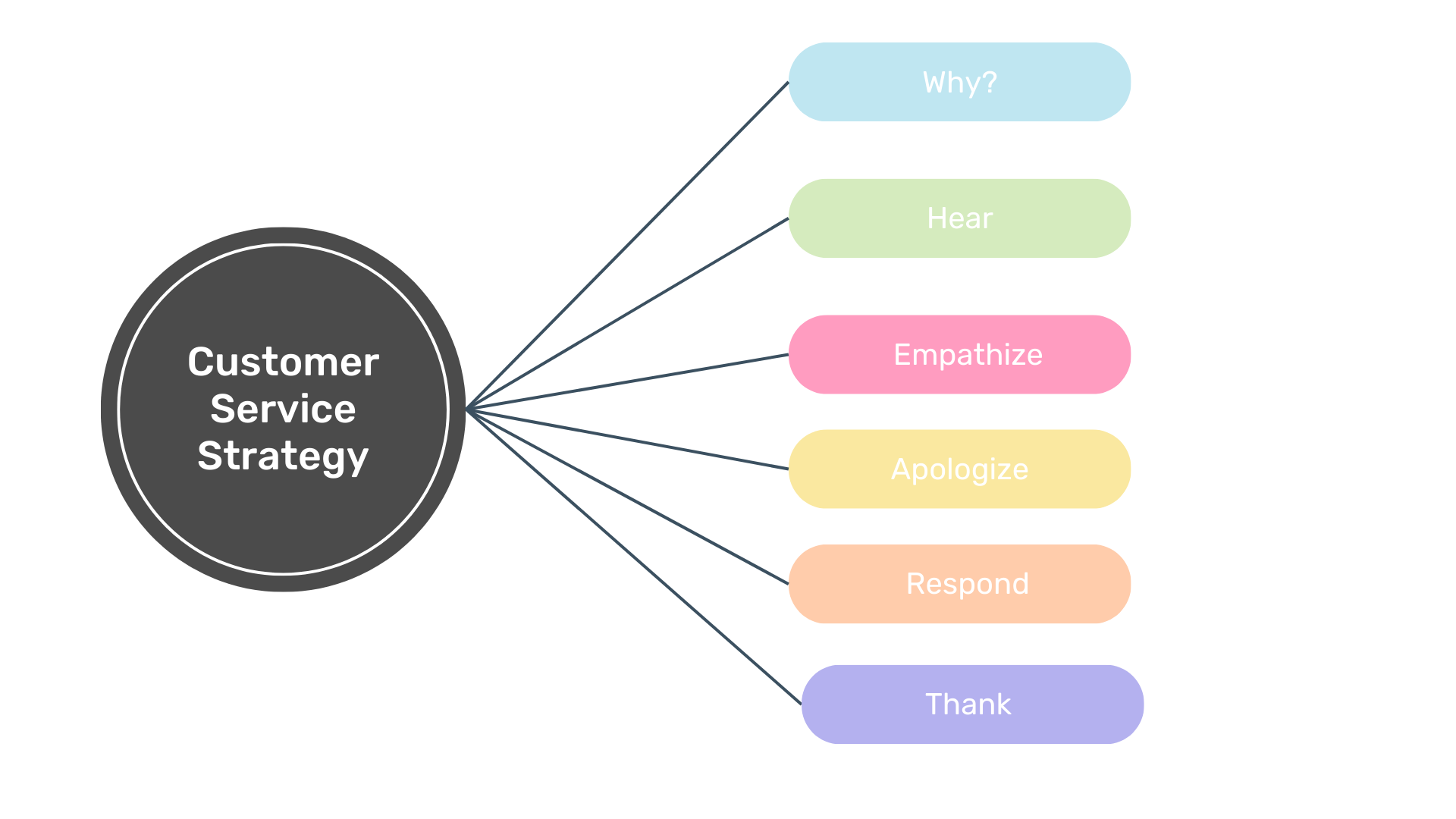Customer Service Recovery
Audience: Insurance company employees providing customer service
Skills: Instructional Design, eLearning Design, Analysis, Visual Design
Tools Used: Articulate Rise, Microsoft PowerPoint
.the details
This micro lesson on customer service was designed for a Wisconsin-based insurance company. While the company has a few dedicated customer service specialists, they wanted to look into cross-training to provide additional flexibility for existing staff. The company typically conducts training in Microsoft PowerPoint, so I created the training in PowerPoint and also developed a mini-lesson using Articulate Rise to highlight its capabilities.
.my Process
I collaborated with one of the company’s customer service specialists, who served as my SME. Together, we focused on determining the overall goal of the training. In the end, we laid out an action map that focused on managing an angry or upset customer experience.
action map
The SME and I discussed the steps one would take when dealing with an angry or upset customer. After we completed the action map, we researched customer service strategy acronyms that closely matched the steps we wanted to take. Acronyms are great tools for organizing information in a memorable way, so that it can be accessed at a moment’s notice - which is often how much time customer service representatives sometimes have to accommodate a customer. We ran across the acronym HEART, which seemed to correspond well to our eLearning goals.
Development
After we refined our goals, I began designing the course in Articulate Rise and Microsoft PowerPoint. I sourced graphics from Articulate Rise to use in both programs and utilized a soothing purple color scheme. I completed the course in PowerPoint first, and after feedback I completed the course in Articulate Rise.
.Key Takeaways
I really enjoyed using Articulate Rise’s micro lesson section. The eLearning experience overall felt more fluid and intuitive compared to Microsoft PowerPoint, and I appreciated the opportunity to explore different authoring tools. The most challenging aspect of the course was reducing the text into the easily digestible chunks necessary for retention - I kept wanting to sneak in additional tips and tricks! Overall, I erred on the side of ‘less is more’, and I think it was the right call.
I’d love to connect with you!




